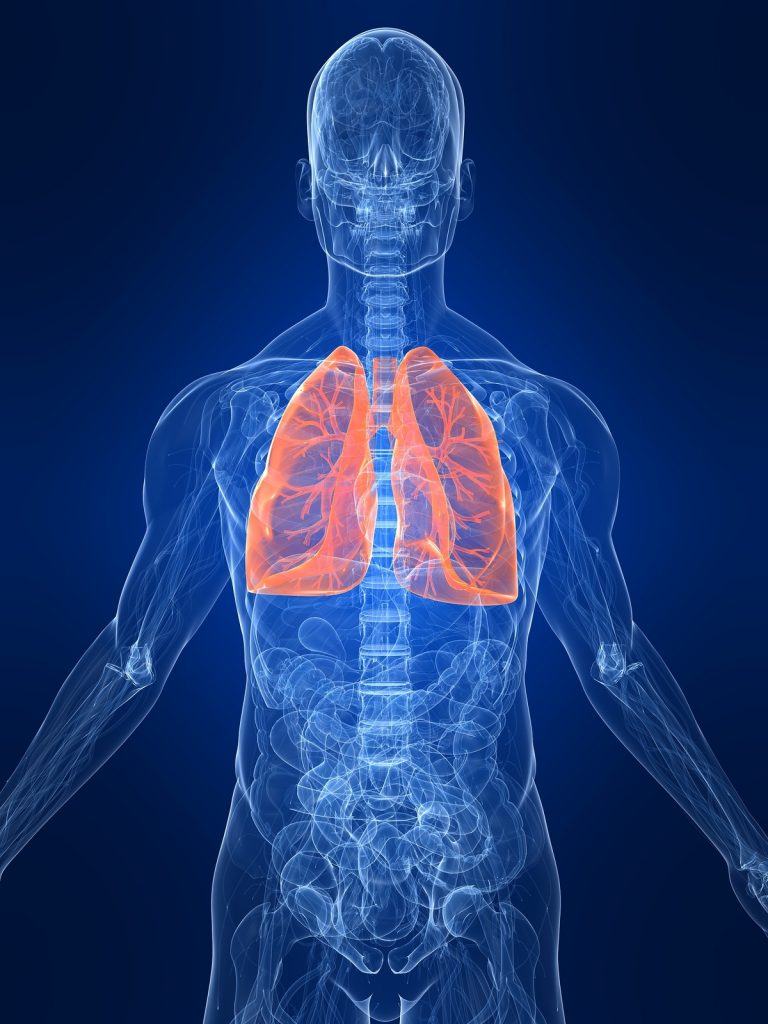 Emphysema is a chronic obstructive pulmonary disease (COPD) where the alveoli, the small sacs within the lungs are destroyed. The alveoli are responsible for oxygen exchange from air to the bloodstream. A person rarely has pure emphysema. It is usually accompanied by other obstructive pulmonary problems and chronic bronchitis. Emphysema is diagnosed through physical examination along with available pulmonary function tests. History may also play a factor in diagnosing the disease. Smoking is the main cause of the disease. Avoiding smoking altogether is the most important step in preventing the disease, although there are some less common genetic causes of emphysema such as alpha-1 antitrypsin deficiency.
Emphysema is a chronic obstructive pulmonary disease (COPD) where the alveoli, the small sacs within the lungs are destroyed. The alveoli are responsible for oxygen exchange from air to the bloodstream. A person rarely has pure emphysema. It is usually accompanied by other obstructive pulmonary problems and chronic bronchitis. Emphysema is diagnosed through physical examination along with available pulmonary function tests. History may also play a factor in diagnosing the disease. Smoking is the main cause of the disease. Avoiding smoking altogether is the most important step in preventing the disease, although there are some less common genetic causes of emphysema such as alpha-1 antitrypsin deficiency.
Shortness of breath is the main symptom of emphysema, which progressively gets worse over the passing of time. Early in the disease, exercise may result in shortness of breath. As the disease progresses, these same symptoms may be experienced even during states of rest.
There are presently no cures for emphysema, however, there are methods to control symptoms. There are medical regimens available that have shown success in preserving function for day to day activities. Education of the disease along with exercise are vital components of pulmonary rehabilitation. There are also surgical options available in extreme cases although they are not currently utilized on a widespread basis.
Emphysema is a disease that won’t necessarily shorten life expectancy, but rather challenges the quality of life. The three morphological types of emphysema are centriacinar, panacinar, and paraseptal. Centriacinar, which is usually associated with long-term cigarette smoking, begins in the respiratory bronchioles, and spreads peripherally most often in the upper half of the lungs. The second form, Panacinar, predominately occurs in the lower half of the lungs and destroys alveolar tissue. It is associated with the previously mentioned genetic disease, homozygous alpha-1 antitrypsin deficiency. The third type is Paraseptal emphysema which often localizes around the septae of the lungs or pleura. It is often associated with inflammatory processes, like prior lung infections.
There are different stages of emphysema, which help determine how much damage is present in the lungs. The Global Initiative for Chronic Obstructive Lung Disease (GOLD) uses FEV1 measurements to help with this determination:
FEV 1 Staging for Emphysema
Stage / FEV1
I = mild ——- greater than or equal to 80% predicted
II = moderate ——- less than 80%, greater than 50% predicted
III = severe ——- Less than 50%, greater than 30% predicted
IV = very severe —— Less than 30% predicted, or less than 50% in chronic respiratory failure
Source:
https://www.medicinenet.com/emphysema_lung_condition/article.htm#emphysema_definition_and_facts
